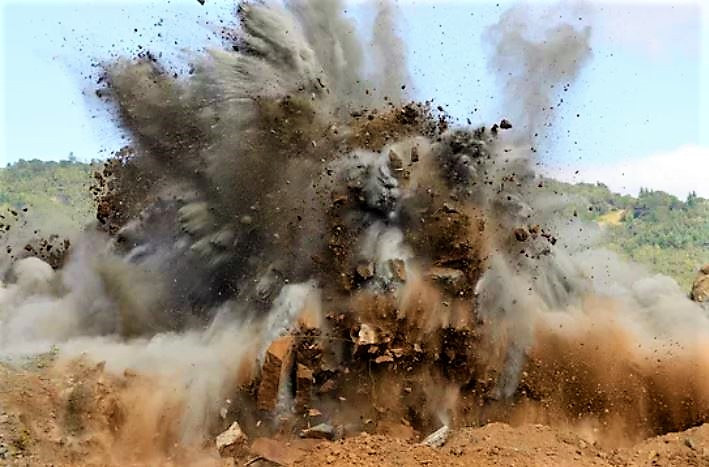
After Caledon residents request monthly updates from Town on blast quarry application staff not present at recent meeting
Town staff were absent from the most recent meeting held by the Forks of the Credit preservation Group Wednesday to update the proposed CBM Cataract blast Quarry. After residents asked for monthly communication from the municipality, only Ward 1 Councillor Lynn Kiernan was present to speak on the matter.
“Staff are doing as they should and working through this application as per their requirements under the Planning Act. They're not here because they don't have any more information and it would just be counterproductive,” Kiernan said. “When they have something to report, they will come back.”
The answer was not satisfactory for a community of residents who have opposed the quarry application, are aware that time is running out to prevent the approval and have heard from legal counsel that critical studies should be completed before the interim control bylaw (ICBL), which is temporarily keeping such projects from getting the green light, ends in the fall.
Mayor Annette Groves has voiced her opposition to the quarry, and said she supports residents who do not want to see the project move forward.
“We are concerned about everything that this community is concerned about and the impacts to this community. So you have a full commitment from all nine of us (members of council),” Mayor Groves said at the previous meeting on April 18.
“I can tell you that we are committed to providing you with the information as we receive updated information, we will distribute that information to the community, we will work with the Forks of the Credit Preservation Group to make sure that you are up to date.”
While Groves said she could not necessarily make a commitment to updating the community once a month, Antonietta Minichillo, director of planning and chief planner at the Town of Caledon said once a month communication was not an unreasonable request. She said the Town would keep residents informed, even if the update was that there is no update.
Despite this commitment, staff were not present at the meeting.
“I think the town needs to really have a hard look at what we are saying as a community. And because the planning people aren't here, and the mayor is not here, you're saying a lot by not being here,” one of the residents said Wednesday. “I think the town needs to do more.”
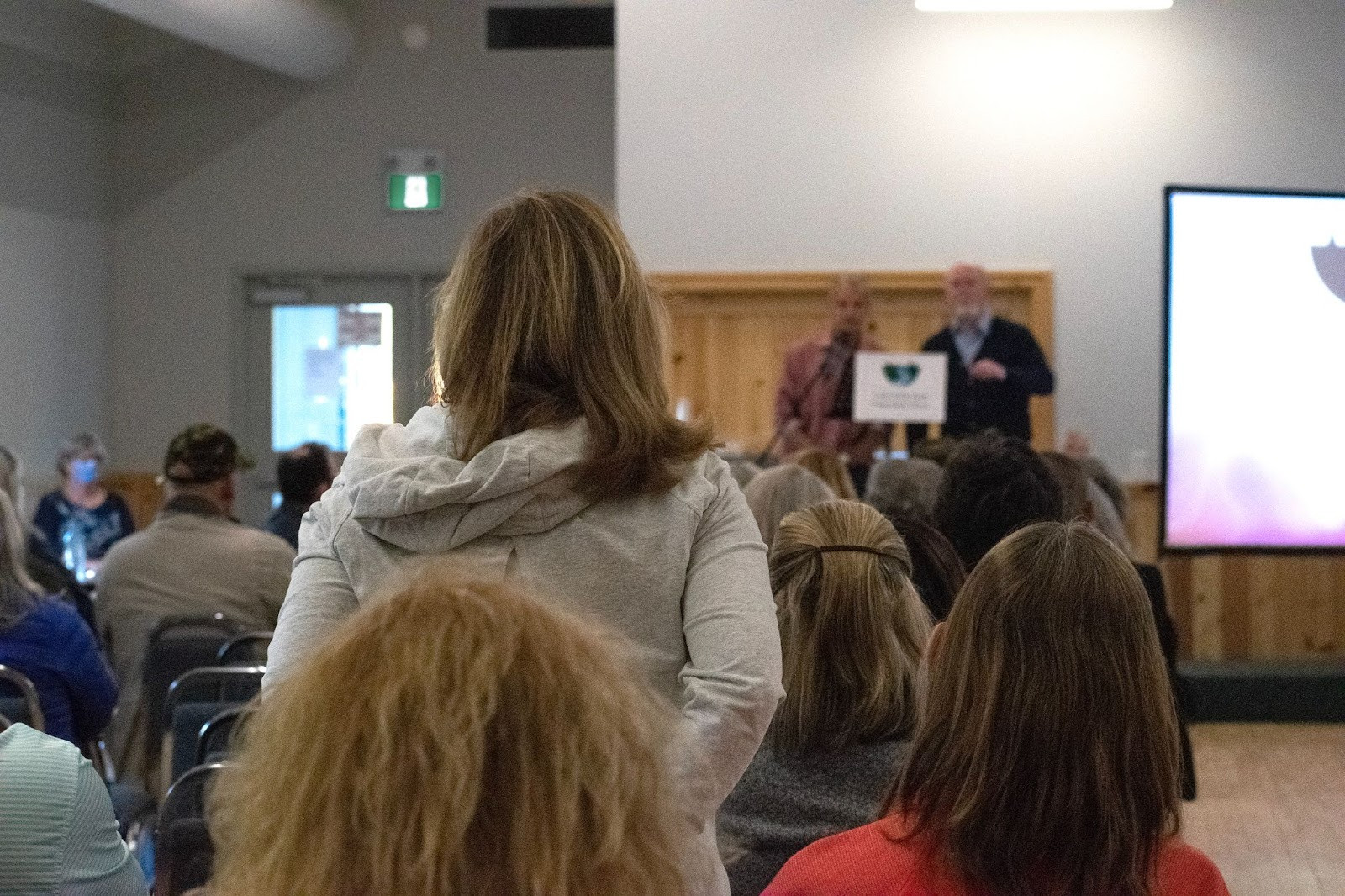
Ward 1 Councillor Lynn Kiernan was the only representation the Town of Caledon had at the most recent Forks of the Credit Preservation Group meeting on the controversial CBM blast quarry.
(Alexis Wright/The Pointer)
The comment from Kiernan that staff have no new information was concerning community members who wondered what has been happening on the controversial file since the last update; the Town only has five months until the end of the ICBL. Council can request an extension of the ICBL, which was intended to allow for a comprehensive policy on aggregate operations which have proliferated across Caledon in recent decades, but many residents do not want to risk lifting the moratorium on applications even for a short period, possibly clearing the way for controversial projects to move forward.
“I do this for a living, organizing experts and producing studies, they take more than six months,” David Donnelley, an environmental lawyer working alongside the FCPG, said at the April meeting. “It's possible this will get done, but once those studies are completed, they have to be passed for public consultation, it has to go back to council, it has to have staff recommendation that has to come up for a vote. We are on an incredibly short timeline here.”
So far the Town of Caledon only has a draft timeline of when all of the necessary studies will be completed, something that was asked for by FCPG President David Sylvester back in March.
The Town is also working on developing an Aggregate Community Resources Working Group which would ensure the community’s position is included in policy reviews. Despite Minichillo saying at a March council meeting that the Town wanted the working group in place before a timeline was created for necessary studies, staff still had not finalized the selection process for the members at the time. Twenty applications were eventually submitted for the working group, and as of Thursday, a day after the meeting (when Kiernan said there was no update), the five members were chosen, according to one of the applicants who told The Pointer.
The Town is now desperately scrambling to make up for lost time. A presentation to the FCPG in October showed that of the Top Aggregate Producing Municipalities in Ontario (TAMPO), Caledon is falling severely behind, ranking last, based on best practices to ensure the public’s best interests are protected, out of the top ten aggregate producers for its lack of policies. The nine issues that TAMPO used to rank the top aggregate producing municipalities were air quality, blasting, cumulative effects, First Nations consultation, haul routes, hydrogeological, natural heritage, noise and surface water.
If Caledon wants to ensure it has stronger policies in place, the Town needs to make up for lost time, as over half of the ICBL period has already expired, with little to show for what staff have accomplished since Council called for a comprehensive review during a one-year moratorium on aggregate project approvals.
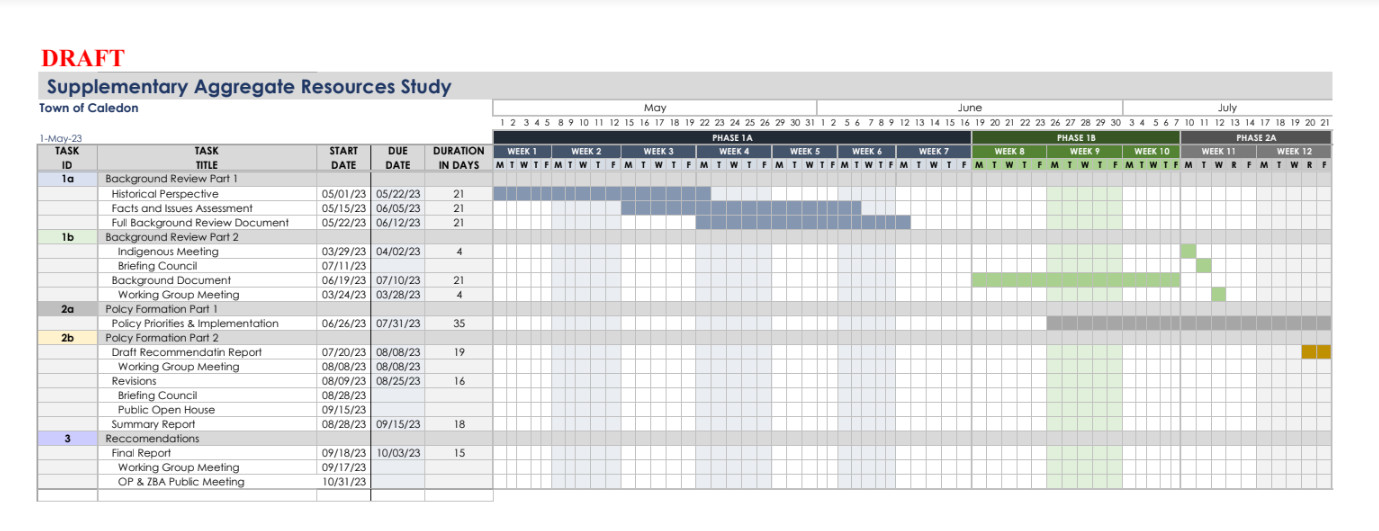
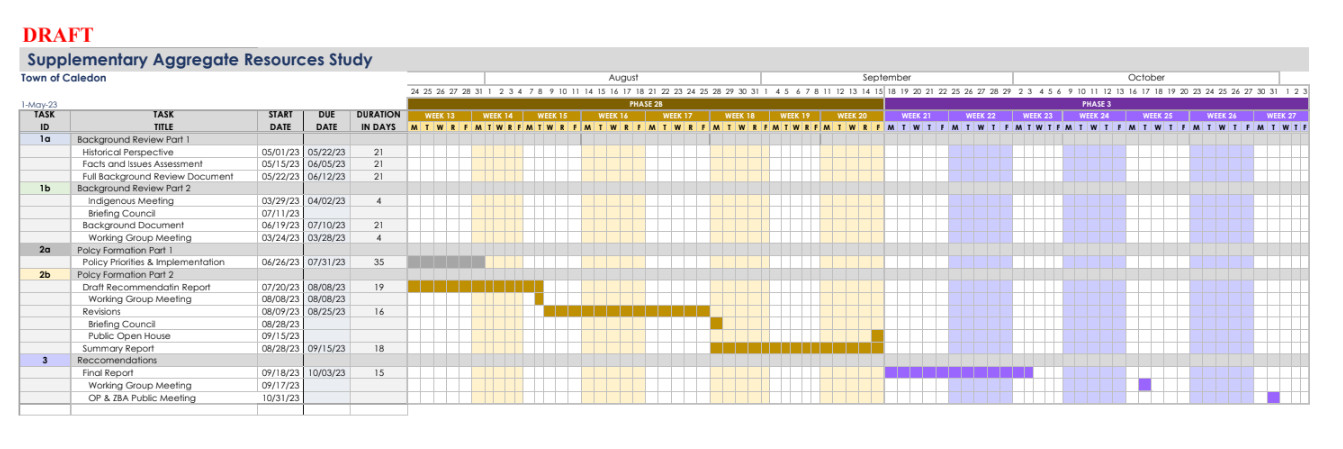
Town of Caledon draft aggregate resources study timeline.
The Town has already missed one critical deadline. Under the Planning Act, a municipality has 120 days once a complete application is received to make a decision. If one is not made in this timeframe, the applicant can file an appeal with the Ontario Land Tribunal.
“Virtually no applications anymore can meet the Planning Act for 120 days. It's too complex,” Kiernan said. “It doesn't matter whether it's government education and housing, application oriented education, that 120 days is virtually unachievable.”
Despite the fact the majority of applications take more than 120 days to review — a statement that was also made by Minichillo last meeting — the deadline for which a decision could be appealed would have been April 15 — three days prior to the previous FCPG meeting attended by Mayor Groves when she vowed to prevent the development of the blast quarry, in front of councillors, residents and town staff. No mention of the deadline passing was made at that meeting.
The Pointer previously reached out to CBM whose representative stated an appeal is not the ideal situation.
“We look forward to working with the Town throughout the process and hope that as a result, the OLT can be avoided. It is our goal to ensure their concerns are addressed to the best of our ability prior to any decisions having to be made about the Official Plan and Zoning Bylaw,” David Hanratty, director of land, resource and environment at Votorantim Cimentos North America, said in an email statement.
With Mayor Groves suggesting council is opposed to the application, an appeal at some point in the process seems inevitable.
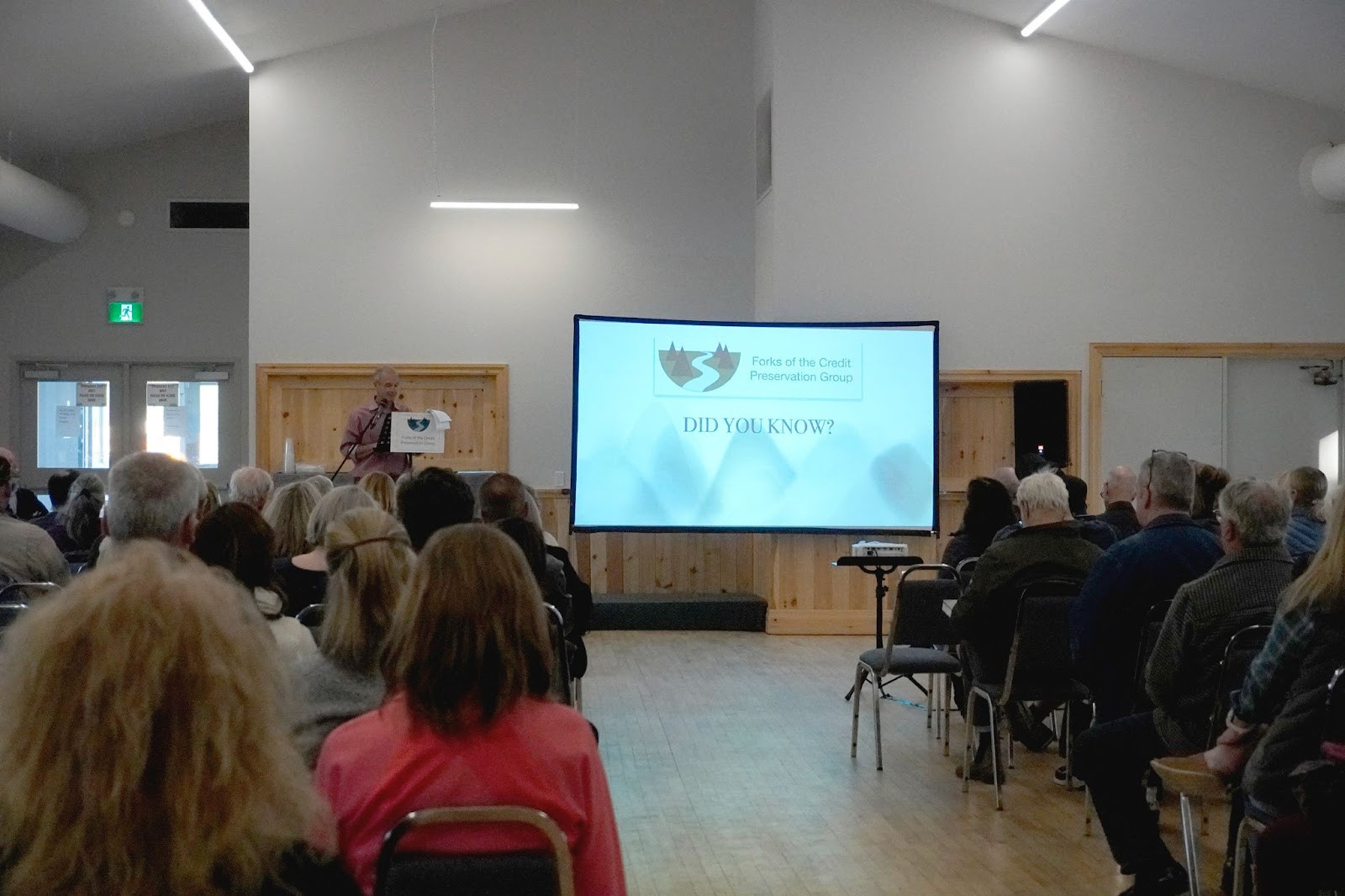
The Alton Legion is filled everytime the Forks of the Credit Preservation Group hosts a meeting on the blast quarry application.
(Alexis Wright/The Pointer)
The question that kept coming up from residents was, “What can we do?”
Members of the FCPG emphasized that residents should show up, educate themselves and make their voices heard. The FCPG said it will continue to hold meetings monthly to discuss different impacts of the quarry. At Wednesday’s meeting the topic was traffic.
Despite all of the negative environmental and safety implications of a below-the-water-table blasting quarry, one often overlooked consequence is the dramatic increase in heavy-cargo carriage trucks, loaded with gravel, on local roads used by residents who often have to navigate not only the commercial vehicles but the stones that routinely fly off the back toward cars.
CBM estimates the quarry will produce 2-million tonnes of aggregate annually. The average truck can carry 30 tonnes of aggregate in one trip, averaging out to approximately 67,000 additional truck trips per year just to service the one quarry.
In its study, CBM evaluated traffic at four different time periods over the course of a few years. However, FCPG pointed out that none of the evaluations occurred in the winter, and they all happened over the course of the pandemic for which CBM claimed they accounted for by adding five percent to the totals.
The study also stated that 90 percent of truck routes will require turning onto Highway 10 from Highway 24, at the main intersection in Caledon Village. This is a major concern for many residents who, over the years, have seen Highway 10 turn from a major artery for vacationers, to a dangerous zone shared by commercial vehicles, locals and those heading north.
According to data from the Ontario Provincial Police (OPP), there were 27 fatal collisions on Caledon’s roads between 2014 and 2019. In that five-year period, eight of the fatal collisions occurred on Highway 10. In November, three fatal crashes happened within four days on Highway 10 between Peel Region and Dufferin County.
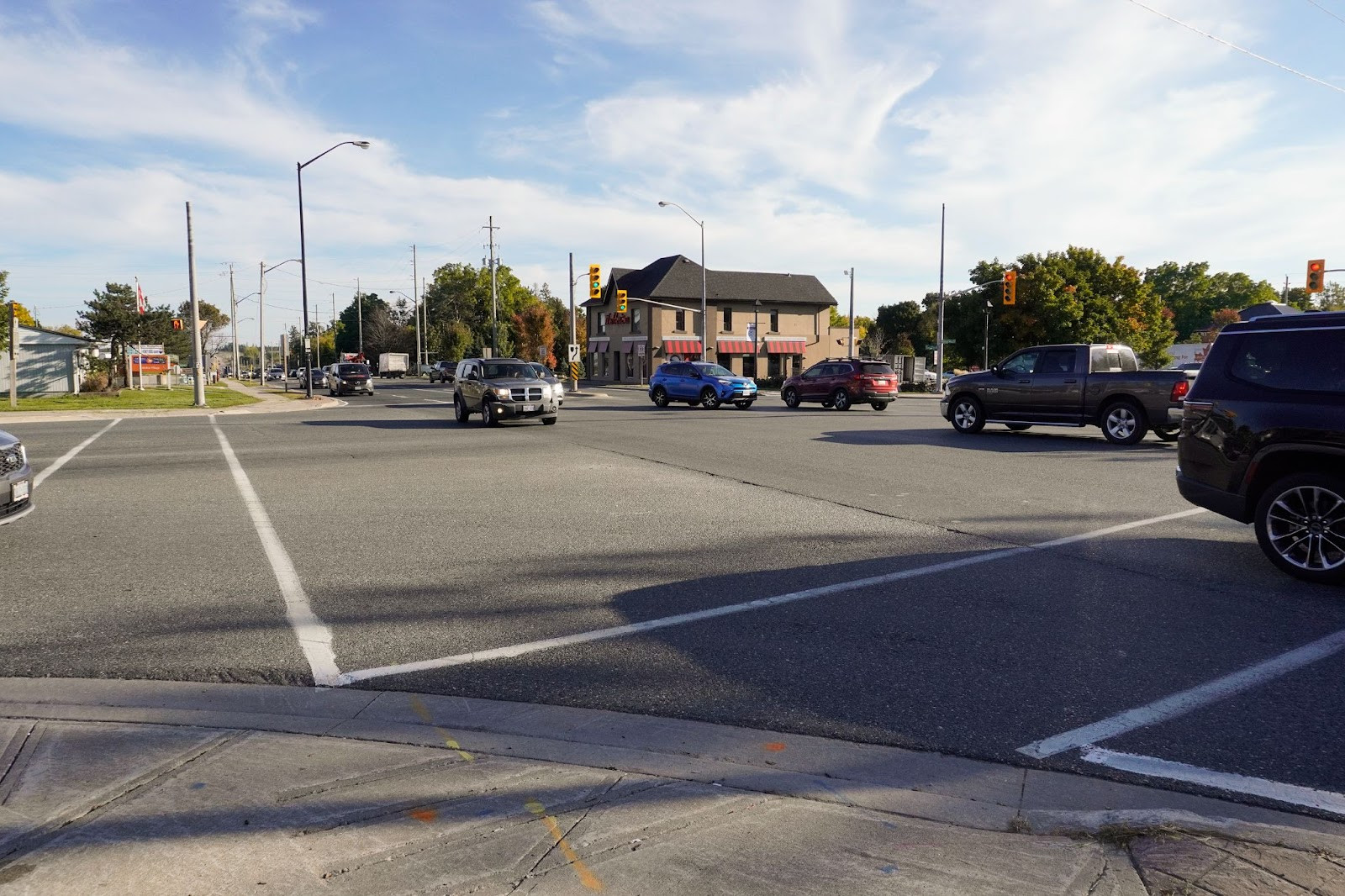
Despite Caledon Village’s small population, the intersection of Highway 10 and Highway 24 is heavily congested. Operations from the CBM quarry will add a significant number of heavy-cargo carriage trucks to the traffic on these roads.
(Alexis Wright/The Pointer)
“As many of you may know, there was a passing of an 18 year old on Charleston [Highway 24]. Exactly one year ago today,” Kate Hepworth, president of the Caledon Village Association, said to the room full of concerned residents Wednesday. “Just remember, there's a family out there, there's many families, sadly, experiencing just that.”
After hearing the grim statistics, it was clear residents had one thing on their mind: “Isn’t it obvious this [quarry] shouldn’t happen?” one said.
With the PC government pushing massive development across much of the province that relies on the concrete the aggregate is used for, it supports intensive gravel extraction. The aggregate industry has the upper hand in these fights.
It is licensed to extract 13 times more material each year than the province currently uses. Despite far more supply than demand, the number of aggregate licences granted is only increasing. This proliferation is largely due to a principle within the Provincial Policy Statement (PPS) that is often used by the aggregate industry to fight off attempts to block projects.
The ‘no need to show need’ policy is unique to the aggregate industry. Other land-use industries such as housing, waste management and industrial uses are required to prove why their land-gobbling operations are necessary, but for the gravel industry “demonstration of need for mineral aggregate resources, including any type of supply/demand analysis, shall not be required,” the PPS states.
The FCPG is encouraging residents of Caledon to continue to send their concerns and queries to the Town to let officials know the community will not stand for their voices to be ignored. Anyone can send comments to [email protected] and CC [email protected]
“I want to let you all know how much I appreciate you taking the time to come here,” Sylvester said. “I've said it before and I'll say it again. There is strength in numbers.”
The next meeting will be held on June 14 at 7 p.m. at the Alton Legion.
Email: [email protected]
Twitter: @rachelnadia_
At a time when vital public information is needed by everyone, The Pointer has taken down our paywall on all stories relating to the pandemic and those of public interest to ensure every resident of Brampton and Mississauga has access to the facts. For those who are able, we encourage you to consider a subscription. This will help us report on important public interest issues the community needs to know about now more than ever. You can register for a 30-day free trial HERE. Thereafter, The Pointer will charge $10 a month and you can cancel any time right on the website. Thank you
Submit a correction about this story


